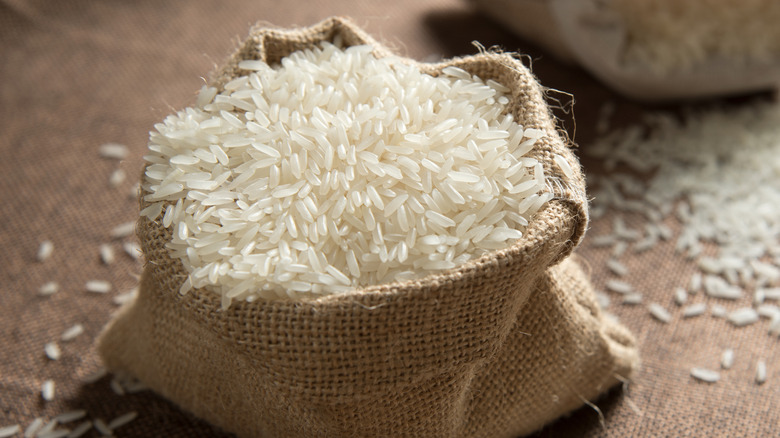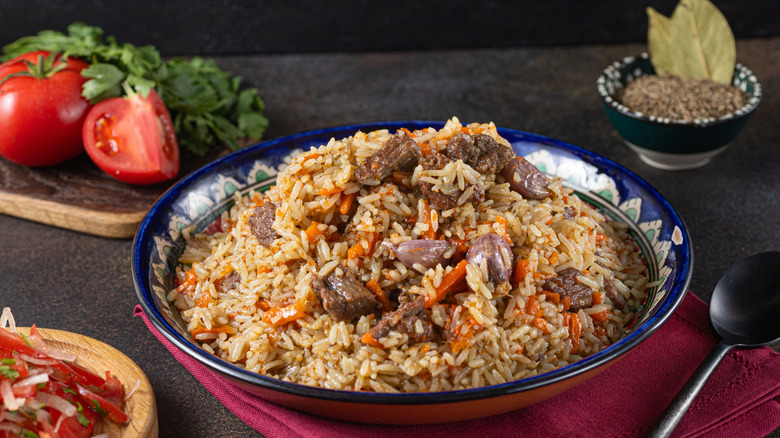
Chadchai Ra-ngubpai/Getty Images
There's no food quite like rice. It's found in the cuisines of countless cultures. In fact, for more than half the global population, rice serves as a major food staple. With a product that's so important and widespread, it's not surprising that there are many strong opinions about the best way to cook it. Mashed tested out a variety of ways to prepare rice and ranked them from worst to best. The one that came out on top involves a simple twist on a familiar process: cooking pilaf-style.
Although many of the precise ingredients and details may change, the basics of rice pilaf involve toasting the uncooked rice in a pan with butter or oil, often alongside aromatics or spices. This imbues the grains with a rich, complex color and flavor that enhances their taste and visual appeal. After toasting, the rice is cooked in a familiar process: adding water, bringing to a boil, then lowering the heat and simmering covered until the water is absorbed.
This method offers several advantages over more familiar ones. Rice cookers are undoubtedly convenient, but they provide little in the flavor department, leaving you to add any seasoning afterward or enjoy the rice on its own. The same is true for stovetop steaming or boiling, as well as using the Instant Pot. Meanwhile, microwaves may be faster, but they can produce a far lower-quality final result. This could partly be due to the difficulty in predicting how different microwaves will heat your food, since they don't all have the same wattage and may require you to experiment.
Cooking considerations for better rice pilaf

Julhabiby/Shutterstock
Those seeking similar flavor boosts to those found in pilaf will need to dedicate the time and effort required for risotto or fried rice, both of which can present various challenges for inexperienced or unprepared home cooks. However, it's hard to deny the variety of fried rice and risotto recipes that can serve as a true meal in their own right.
Some of the hurdles presented by cooking pilaf include the risks of over-toasting the rice and using an inappropriate amount of water. You also have to cook it for just long enough to absorb the water but not so long that the rice burns. If you're wondering whether the type of grain makes a difference, note that the pilaf approach is typically recommended most for aromatic varieties, such as jasmine or basmati.
So, the next time you're in need of some rice for a side, give this method a try. Whether you want a standard meal or something deliciously unusual like our Thanksgiving rice pilaf recipe, it's hard to go wrong with this simple enhancement to a familiar staple.



